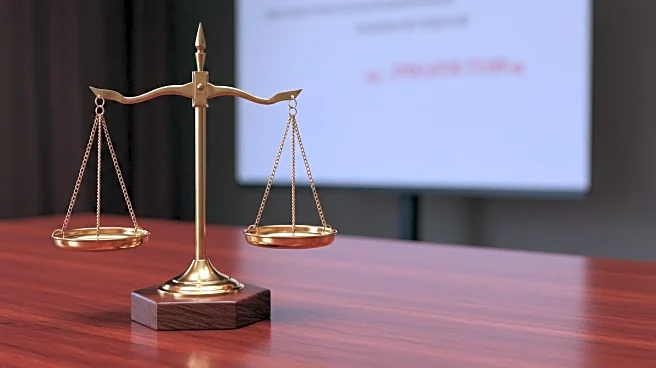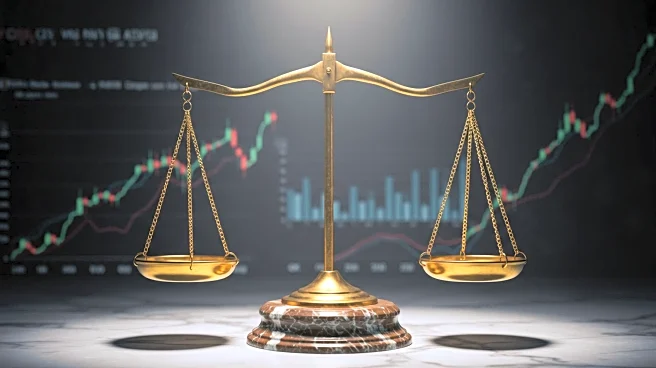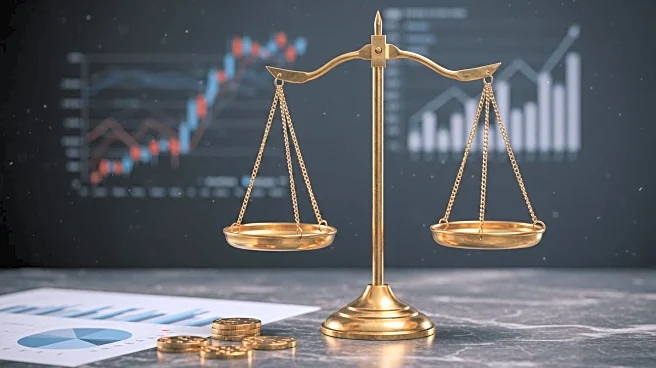By Howard Schneider
WASHINGTON (Reuters) -Fed Chair Jerome Powell used the central bank's annual Wyoming research conference to promise inflation-fighting rigor when it was needed in 2022, then last year he came to the defense of the job market with promises of lower interest rates when the unemployment rate seemed on a steady rise.
In his valedictory speech to the conference before his term ends next May, Powell on Friday faces a choice between the two approaches at a time when incoming information
has confounded his data-dependent strategy by pulling in both directions. His colleagues are split whether higher inflation or higher unemployment is the bigger risk. Both investors and the Trump administration have strong expectations that rates will fall at the Fed's September meeting regardless.
But whether rates do get cut then may be less important than how Powell frames the next steps in evaluating an economy that by some measures is slowing, but by others remains healthy with signs of rising prices still to come. While Powell has pivoted hard when needed, the current moment may find him still straddling the Fed's twin goals of stable prices and low unemployment.
"The Powell I know wants to be data dependent and not make a decision before he has to," said former Fed Vice Chair Richard Clarida, now global economic adviser for Pimco. "If they do cut in September there will be a lively communication discussion. What are we communicating? Is this one and wait? The first of five or six? Even if they want to cut, the communication could be a challenge."
Powell's speech against the backdrop of the Grand Teton Mountains near Jackson Hole will cap a tumultuous eight years punctuated by a global pandemic that spawned aggressive policy invention, a follow-on outbreak of inflation that prompted record-setting rate hikes, and an incessant stream of personal insults from President Donald Trump.
Powell in his 2022 speech channeled the late Fed chair Paul Volcker in pledging to stamp out inflation whatever the cost to jobs and growth. He is now being challenged to channel Volcker's successor, Alan Greenspan, another archetype Powell has referenced in Jackson Hole speeches, to look beyond signs of inflation risk and bring the Fed's 4.25%-to-4.5% policy rate closer to the 3% area seen as "neutral," no longer meant to restrain the economy and appropriate when policymakers are confident inflation will return to their 2% target.
LOOKING AHEAD
Inflation remains about 1 percentage point above target now, with reason to think it is moving higher, but the Trump administration argues the risk of persistent price increases is minimal and will be offset by deregulation and the rising productivity that it could induce.
"They try to be more data-driven, which I think is a mistake," forcing policymakers to wait for confirmation that elevated inflation will recede, Treasury Secretary Scott Bessent said recently, nodding to Greenspan's "very forward-thinking" 1990s approach to look past rising prices, downplay calls among his colleagues for rate hikes, and count an expected jump in productivity that did help ease inflation.
Fed Governor Christopher Waller, on Trump's list of potential Powell successors, has also laid out arguments for looking beyond the inflation risk from higher tariffs. Waller favors immediate rate cuts to guard against what he feels is developing weakness in the job market, in contrast to colleagues who want more confirmation before acting.
That group has so far included Powell. Early in his tenure he made clear his intent to anchor decisions in data and not be overly influenced by economic models and forecasts, willing to move fast when the data compelled it but cautious both temperamentally and under the framework the Fed has been using.
While helpful in avoiding false starts to policy shifts, the approach is susceptible to falling behind given that Fed actions take time to affect the economy and when revisions to past data upend the incoming signal. That happened recently when the Bureau of Labor Statistics slashed earlier estimates of job growth in May and June, a historically large markdown that added to Waller's case of a weaker-than-it-seems job market.
LIFTING FOG?
With economic growth ebbing to perhaps around 1%, administration officials including Bessent have noted that topline economic data appears weaker now than it did last September, when Fed policymakers followed Powell's promise at Jackson Hole to "do everything we can to support a strong labor market" with a half-percentage-point rate cut.
The administration and some Fed policymakers see an inconsistency there - if the economy is worse off, why not cut? - and also tension between "data dependency" and the decision to pause what was expected to be a series of rate cuts this year because of forward-looking concerns about how then-unannounced policy changes, like higher tariffs, might impact inflation.
What Trump eventually proposed on tariffs was far more aggressive than expected, and though the current litany of import taxes has not proven as economy-shattering as economists anticipated, it is only recently that Fed policymakers - including Waller - have felt they were back on firmer ground when talking about the future.
"The fog is lifting," Richmond Fed President Thomas Barkin said last week.
It now rests on Powell to say by how much, and in particular to signal if the Fed is about to resume steady cuts, make a cautious first reduction without promising more, or keep waiting on more data.
Beyond weaker job and economic growth, things are different from a year ago. Interest rates are lower and therefore already less restrictive, stock markets are booming, the unemployment rate has remained steady, and an inflation rate that had been declining monthly when the Fed cut last year has changed little since, except to edge higher recently.
Even Waller said that while he saw slow growth as grounds "to move monetary policy toward neutral," if he is wrong about inflation or job market weakness "we would have the option of holding policy steady for one or more meetings."
(Reporting by Howard Schneider; Editing by Dan Burns and Anna Driver)












